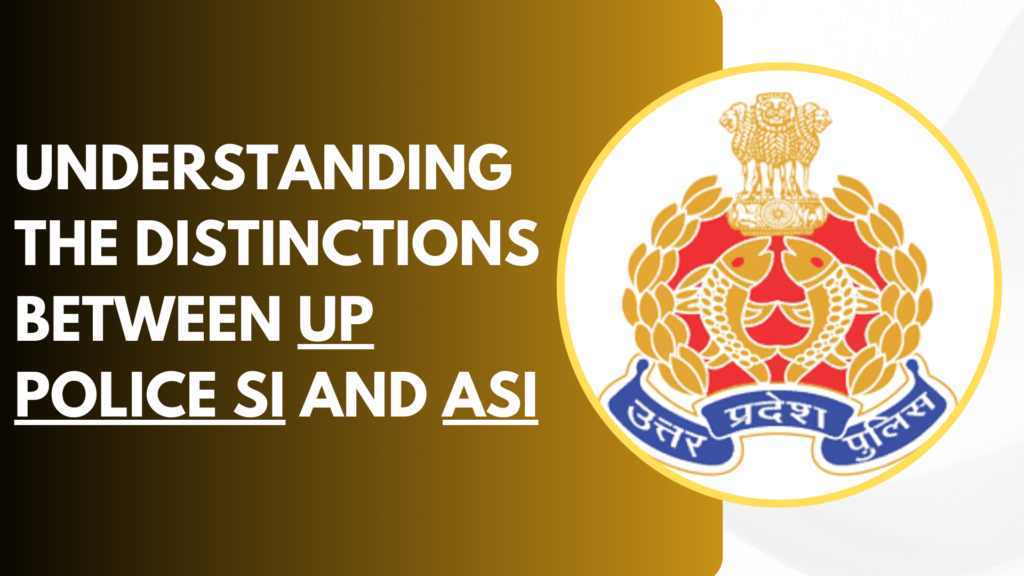Introduction
When contemplating a career within the Uttar Pradesh Police, discerning the disparities between the Sub Inspector (SI) and Assistant Sub Inspector (ASI) ranks becomes imperative. These divergent positions not only diverge in terms of duties and authority but also in entry requisites, career evolution, and associated benefits.
Divergence Between UP Police SI and ASI
1. Job Roles and Responsibilities:
- SI (Sub Inspector): Assumes command of a police station, spearheads investigations, and oversees subordinate officers.
- ASI (Assistant Sub Inspector): Assists in supervising police station activities, aids SIs in administrative tasks and field operations.
2. Eligibility Criteria:
- SI: Mandates a bachelor’s degree and specific physical standards.
- ASI: Typically necessitates a high school diploma or its equivalent, alongside physical fitness benchmarks akin to those for SI, albeit with slightly less stringent educational prerequisites.
3. Selection Process:
- Both Ranks: Encompasses a written examination, physical fitness assessments, and personal interviews. Nevertheless, the examination’s complexity may vary, with the SI role typically demanding a higher level of proficiency and aptitude.
4. Career Advancement and Promotion:
- SI: Offers swifter promotion prospects to higher echelons within the police hierarchy.
- ASI: Progression may be slower, with fewer avenues to ascend to senior administrative positions.Suggested :- PSCC APK Download
5. Salary Structure:
- In the Uttar Pradesh Police, SIs are remunerated as per the 7th Pay Commission, with salaries contingent on rank, tenure, and other pertinent factors. Due to their elevated rank and extensive duties, SIs generally command higher salaries than ASIs.
- Conversely, ASIs, also governed by the 7th Pay Commission, receive a commensurately lower salary reflective of their rank and less extensive responsibilities compared to SIs.
6. Additional Benefits and Allowances:
- Perks Beyond Basic Pay: Both SIs and ASIs enjoy an array of benefits and allowances, encompassing housing, travel, and dearness allowances, designed to offset job-related expenditures and living costs. While the basic structure remains similar, SIs often qualify for augmented allowances due to their seniority.
- Health and Retirement Benefits: Both ranks avail themselves of comprehensive healthcare and retirement plans, pivotal for long-term job contentment and security. However, the specifics may marginally differ, mirroring their disparate levels of responsibility and remuneration.
7. Impact of Rank on Professional Status:
- Social and Professional Recognition: Rank significantly influences an officer’s social and professional stature. Holding a higher rank, SIs generally garner more acknowledgment and wield greater influence both within the police fraternity and in public interactions.
- Opportunities for Specialized Assignments: SIs are more predisposed to specialized units or high-profile cases, fostering further career progression and enhancements in professional proficiency.
8. Challenges and Responsibilities:
- Daily Challenges: While both SIs and ASIs encounter daily hurdles, SIs often contend with more intricate scenarios due to their leadership roles. Challenges for SIs span from managing critical incidents to orchestrating interagency collaborations. ASIs, although confronted with analogous situations, typically handle challenges of a less strategic and more administrative nature.
Understanding these nuanced disparities aids prospective candidates in aligning their career aspirations with the suitable entry position and preparing accordingly for their preferred role within the UP Police.

